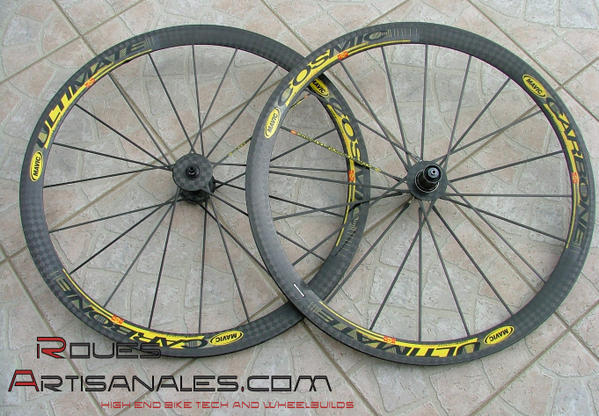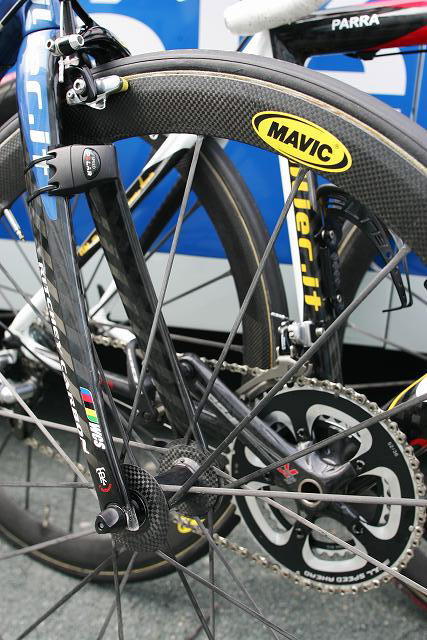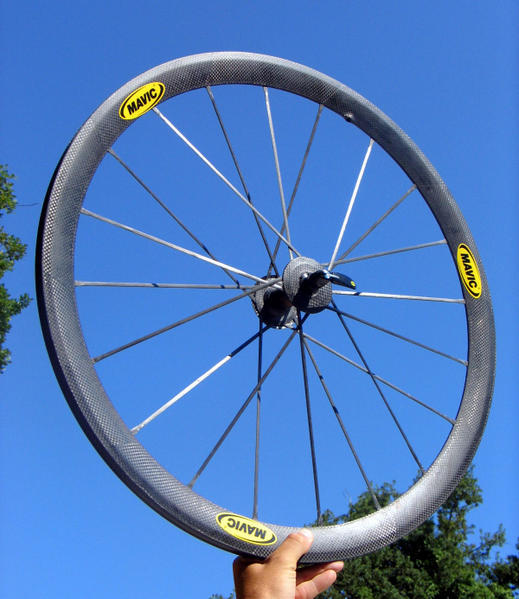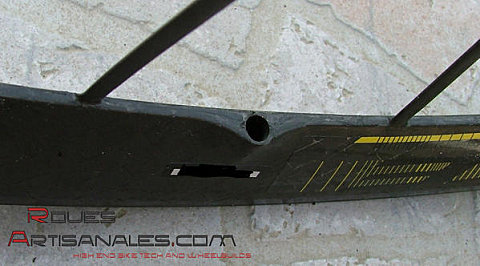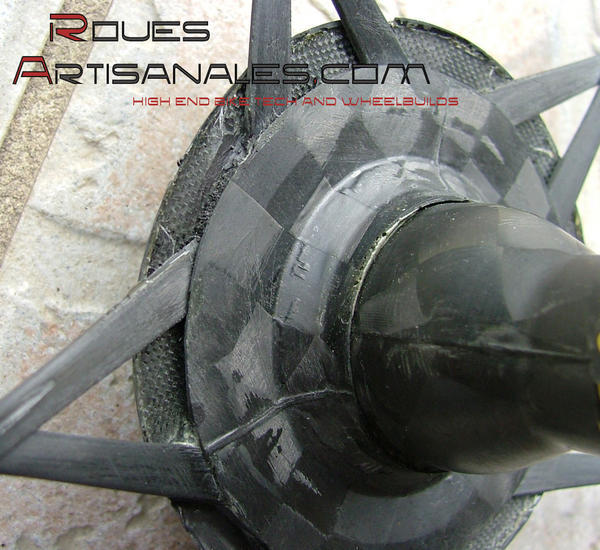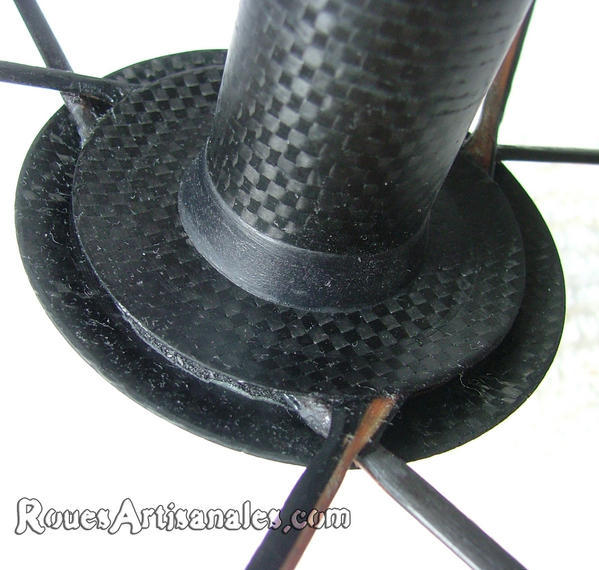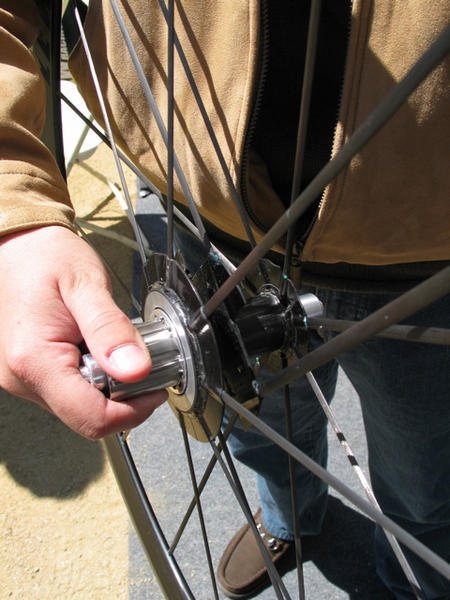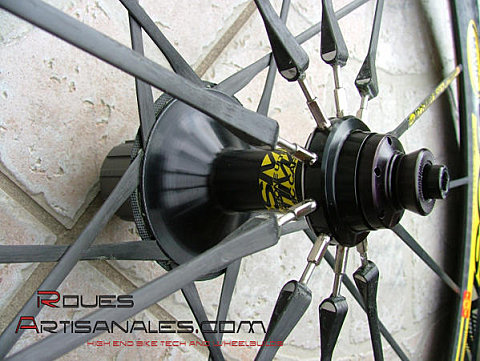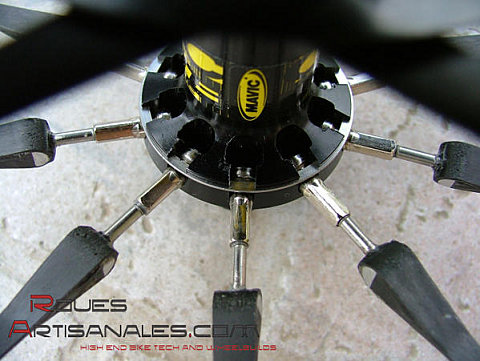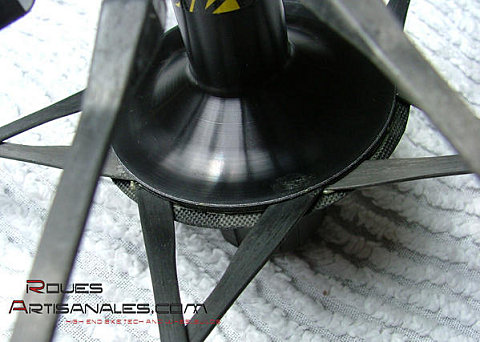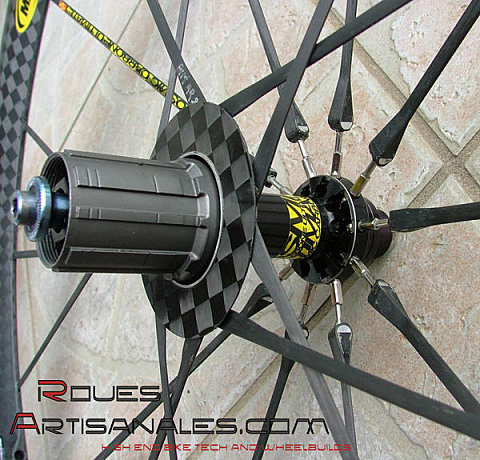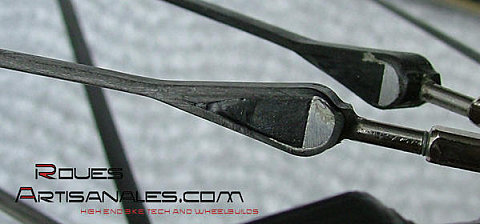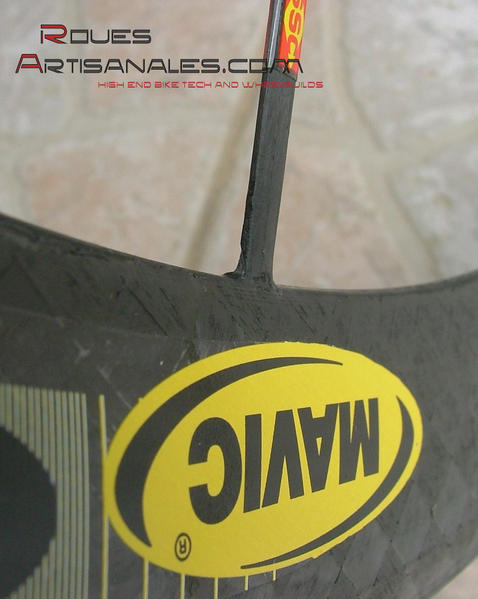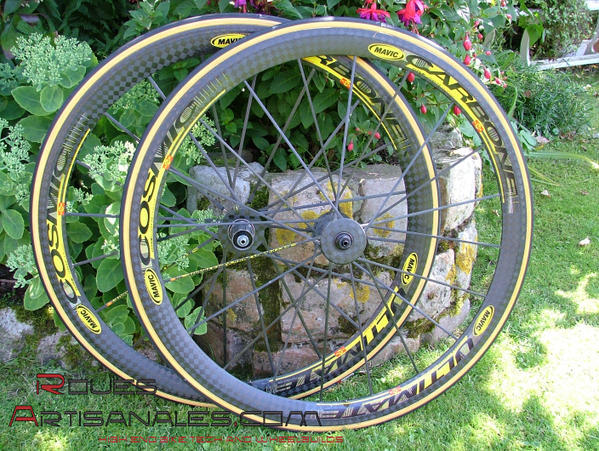Mavic introduced mid-February a new wheelset that is different to the norm and whet they have produced in the past. After an intensive testing period
that lasted more than a year, the wheels saw the Tour de France roads as a final test last year. We covered enthusiastically each successive evolution and the tests of these brand new full carbon
fibre wheels (almost full) in a preview showing.
As you will notice, these hoops bear a striking similarity to the Lightweight wheels from Carbon-Sports. The manufacturing process should be very similar, judging by the visual look of these
wheels. For instance, the spokes are wrapped around the hub, that is sure. However, upon closer inspection the differences between both of them are definitely present.
So is this a pale imitation; does it really bring interesting features and changes? We’ll compare them to bring a fair judgement about the CCU, while also
presenting their pros and cons.
As any high range carbon part, the delays are excessive. Although the press sometimes have exclusivity, we had to wait several weeks before getting this set. We can’t imagine how long it could be
for the final customer. Mavic, Lightweight and Lew Racing for wheels, THM, BTP, Ax-Lightness for the components; they all announce delays of many weeks, sometimes many months. It’s the reason why
our tests take so long to be performed.
We are owning a pre-serie wheelset from February/march. The last versions are better finished.
The Cosmic Carbone Ultimate claimed weight is 1185g. Including a thin dried layer of sement, our set is 1200g. This is light but we’re far from the Lightweight at 920g and the Lew at
880g.
The weave used here is 12K, which provides longer life, but a lower impact resistance than the 3K one used for the testing wheels. This 12K weave is more and more used nowadays in the bike industry
because of availability and low cost.
| The 3K carbon fiber for the testing wheels | |
|
Click to enlarge |
Click to enlarge |
About the spokes. Both the front and the rear have 20 spokes. The rear wheel non-drive side spokes are a bit special since they are laced radially and they have a truing system. We’ll speak again
about this further.
The Cosmic Carbone Ultimate use high profile 40mm rims. Their width is 21mm. The shape of the rims, which is slightly curved should provide better aerodynamical properties than a triangular
rim such as the one used for the Lightweight. This hypothesis will be verified in a wind tunnel in the following weeks.
About the rear rim, it is asymetrical to optimize the spoke tension balance. The asymetry is around 3 or 4mm which is significant. Conseqiently, using a high bracing angle is not really an issue.
We can verify/realize this design from the moulded valve hole, which is offset.
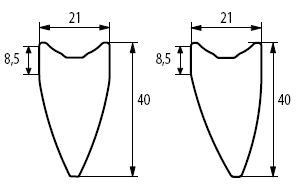
Looks: obviously such a judgement is subjective. Our belief is that the stickers are perfectly designed. They give the wheels an impression of speed! However, the quality of the pictures do not
really do them justice.
Front one
The front hub is entirely made of carbon. This is the same weave as the rim. The shape is particularly worked this way since this is not a simple tube: the center is narrower for better aerodynamic
properties. This middle part is bonded into the flanges and we have noticed some permanent marker to hide the glue. One can discern some residual glue and foam between the two parts of the flanges,
same as can be found on the Lightweight. It shows how close to Lightweight wheels the CCU’s process is.
About the finish: this hub is not as nice as pleasing aesthetically as its direct competitor (i.e Lightweight) which was not perfectly finished either. On the hub of this CCU, we noticed several
scratches and imperfections. The wheels are finished by hand and the set in our possession was one of the first produced. With time, we believe the aesthetic should normally improve and be more on
a par with the Lightweight’s.
Feel free to have a look at the following pictures to see the differences in term of finish and the similarities in term of manufacturing process.
| Mavic CCU and Lightweight Obermayer hubs | |
|
Click to enlarge |
Click to enlarge |
Rear one
The rear hub is made from an aluminium alloy. This is quite surprising considering the range level the wheels are destinated for. They certainly leave an open door for further improvements. Some
carbon hubs rear wheels were test ridden by the Cofidis pro riders during the 2006 Tour de France. They didn’t have the truing system, certainly, but a carbon fibre hub could have been designed to
accomodate the system if it was really useful. Conversly, the system could have been modified to fit the peculiarities of a carbon fiber hub. For instance, some grams would have been saved on the
wheel.
In short, the rear hub is made in two parts. The main body that includes the drive side flange, is machined to fit the truing system nipples during the build process. The second part really holds
the nipples when the wheel is completed. Between these two parts a thin ring firmly blocks the nipples. This is ingenious but the wheel look is not as cool.
A less obtrusive and more discreet system with all black nipples would have matched better the general look. The hardware is in brass. Aluminium parts could have killed two birds with one stone
while bringing lightness and a black anodization.
Geometry. The distance between the hub flanges that is synonymous with stiffness, is 55mm. As a comparizon, the Lightweight width is 58mm and the Lew Pro VT1 are 60,61mm. Mavic CCU flange to
flange width is lower than the two competitors but there is also the 3mm asymetry of the rim to take into account.
|
Click to enlarge |
|
|
Click to enlarge |
|
|
|
Click to enlarge |
Made out of unidirectional carbon fibres, the black spokes bring interesting characteristics: they have twice the resistance of a standard 1.8mm round spoke, and a weight reduction of
35%. The front wheel spokes are moulded inside the rim, then wrapped around the hub then go back to the rim, a few centimetres from their starting point.
This concept is used only for the drive side of the rear wheel. The non-drive side spokes are moulded inside the rim and then screwed to the hub via a nipple, just like a conventional wheel. This
system allows a wheel that can be trued, which is interesting when the manufacturing process can still be perfected.
With regard to spoke tension, the front wheel is not that tight. However, the rear wheel spokes are incredibly tight on both sides.
Insertion point of the spoke inside the rim
The question has to be asked. This system breaks the aesthetic lines and adds weight. Why is the rear wheel equipped with this while the front one isn’t?
There are several answers and hypotheses, but one reply is obvious. The relatively early time in the manufacturing process of these wheels shows that there is a lack of precision, especially for a
rear wheel that doesn’t have equal bracing angles. However, it is likely that this will improve over time.
The front wheel which is easier to build is not perfectly round nor true either. Thus, a truing system was chosen for the rear wheel to guarantee decent precision…
In theory, this high range of wheels from the French manufacturer and its financial wherewithal, means it can match itc competitors. However, against its immediately direct competitor
(Lightweight), its only advantage is the price (300 euros less). This, is in theory of course. We will visit Mavic in Annecy by the end of the month or early August to fully evaluate each wheel
for: inertia, lateral and frontal stiffness, aerodynamism, bearing resistance.

Click to enlarge
Why was the front hub shape modified after the 2006 Tour?
M.L: The current front hub is faster but was unfortunately not ready for the 2006 Tour.
A carbon rear hub would have been cooler, why did you use aluminium?
M.L: The rear hub is made out of alloy for mechanical reasons. A similar hub in carbon would have been heavier because of the alloy/carbon interfaces for the FTS-L engagement system and the
truing non drive-side system. Moreover, the delays and budgets of design and research and development would not have been respected.
Why didn’t you use black anodized for the truing system?
M.L: Brass nipples are more reliable than alloy ones. About the black color, the designers didn’t choose a stealth truing system, they looked for something visible.
You use a permanent marker to hide the imperfections and glue left over?
M.L: We sometimes use some permanent marker, as all our competitors. However, we use it less and less, and when it’s used, it’s now more discreet.
We have had to be very patient to get the wheels, many months. Will every customers have to deal with such long delays?
M.L: About the quantities, we’re starting the production. Every orders are concentrated at the same time in the whole world. We have to absorb this peak. Then, by the end of the month, we will
be able to guarantee the same delay as any wheel of our range. Who can do that well?

